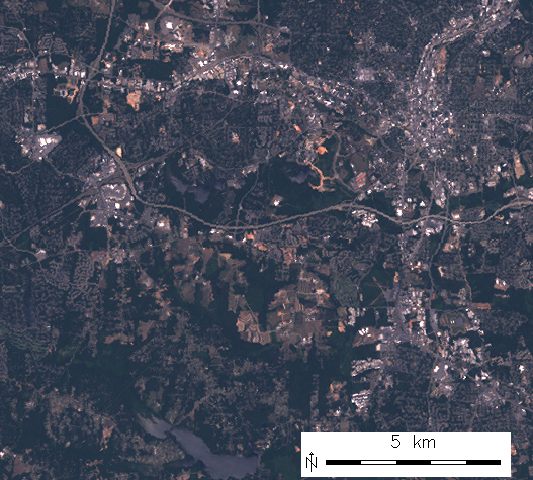
Note: A new GRASS GIS stable version has been released: GRASS GIS 7.8, available here.
Updated manual page: here
NAME
i.colors.enhance - Performs auto-balancing of colors for RGB images.KEYWORDS
imagery, RGB, satellite, colorsSYNOPSIS
Flags:
- -f
- Extend colors to full range of data on each channel
- -p
- Preserve relative colors, adjust brightness only
- -r
- Reset to standard color range
- -s
- Process bands serially (default: run in parallel)
- --help
- Print usage summary
- --verbose
- Verbose module output
- --quiet
- Quiet module output
- --ui
- Force launching GUI dialog
Parameters:
- red=name [required]
- Name of red channel
- green=name [required]
- Name of green channel
- blue=name [required]
- Name of blue channel
- strength=float
- Cropping intensity (upper brightness level)
- Options: 0-100
- Default: 98
DESCRIPTION
i.colors.enhance auto-balances and enhances the color channels of a RGB image (e.g. from Landsat) to provide a more natural color mixture. Only the color table of each image band is modified, the base data remains untouched.The module works by calculating a histogram for each color channel and removing an adjustable amount of outliers from either end before recalibrating the color scale with r.colors.
It will work with any 8-bit RGB imagery set and the script is easily modified to work with other datasets of greater band-depth.
NOTES
Depending on the image, it may or may not be advantageous to use the -p flag to preserve the relative color scaling. You will have to experiment with the different options to find a setting that works best for your particular imagery.The strength option should generally be set in the 90-99 range. The lower the number, the more saturated the image becomes. It represents the percentage cut-off for the top end of the color histogram curve. The lower end is fixed at 2% of the area under the curve.
For quicker execution of this module on large images you can achieve largely similar results by switching to a coarser resolution before the running of the module (using g.region) and then back to the original resolution afterwards.
EXAMPLE
North Carolina sample dataset example with Landsat data:g.region raster=lsat7_2002_10 -p d.rgb blue=lsat7_2002_10 green=lsat7_2002_20 red=lsat7_2002_30 d.barscale at=55.3125,93.125 bcolor=white text_pos=over i.colors.enhance blue=lsat7_2002_10 green=lsat7_2002_20 red=lsat7_2002_30 strength=95 d.rgb blue=lsat7_2002_10 green=lsat7_2002_20 red=lsat7_2002_30 d.barscale at=55.3125,93.125 bcolor=white text_pos=over

Uncorrected RGB composite of Landsat ETM channels B/G/R

Color corrected RGB composite of Landsat ETM channels B/G/R
TODO
The strength option requires further refinement.SEE ALSO
d.rgb, g.region, i.oif, r.colors, r.composite, r.univarAUTHORS
Markus Neteler, Trento, ItalyM. Hamish Bowman, Dept. Marine Science, Otago University, New Zealand
Last changed: $Date$
SOURCE CODE
Available at: i.colors.enhance source code (history)
Note: A new GRASS GIS stable version has been released: GRASS GIS 7.8, available here.
Updated manual page: here
Main index | Imagery index | Topics index | Keywords index | Graphical index | Full index
© 2003-2019 GRASS Development Team, GRASS GIS 7.4.5dev Reference Manual